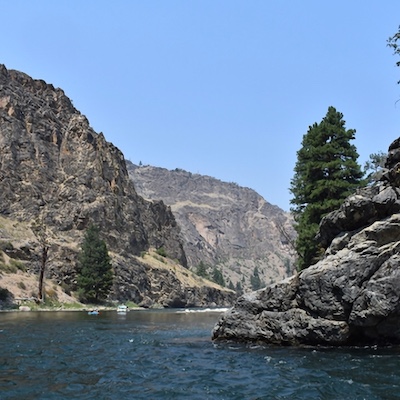Rafting Basics
boating
Rafting appeals to many different people. From fishing trips to whitewater adventures, rafting is an all around great time. For four years I was a whitewater raft and kayak guide and spent a lot of time on the water. One of my favorite parts of rafting is the way it can bring people together. I guided paddle rafts so it was usually me and eight to fourteen clients on the raft. It was my responsibility to help the group work in unison so that we could all make it down the river safely. Rafting allows for more socializing in groups, and on flat sections you can set your paddle down and enjoy the scenery.
Since I was young I have been rafting with my family; my Dad was a river guide on the Grand Canyon and we went on some sort of rafting trip every summer. This helped me develop a love and respect for the water, as well as the ability to look downstream and recognize hazards that may be ahead. Growing up rafting also benefited me when I got my own guiding job on the Salmon River.
In short, rafting is an absolutely incredible experience and one that I would recommend to everyone. How do you start? This is another activity where you need to go with someone who has experience when you first start. There are many incredible guiding companies throughout the world that you could go through, or if you meet someone who runs private trips, you could try to get involved with them.
Commercial vs Private Trips #
With Commercial trips everything will be taken care of. Food, shelter, gear, etc. On private trips everyone is responsible for being prepared, and in pitching in to cover any permit costs.
In deciding which option to choose, it can help to determine a few more things. First, how long do you want to boat? There are day trips that only last a few hours (that is what I guided), or week-long trips in the middle of nowhere. I love doing both, so it is really up to personal preference. Another thing to decide is how much work you want to do. I have been on many private trips and I have guided lots of commercial trips. I can tell you that a good company will allow you to just show up and they will do the rest. Private trips are a lot of work, but you also have control over how everything will work out. Again, there are pros and cons to each so it is up to you to decide which one sounds more enjoyable.
How will you move? #
A boat in and of itself is a good, but without a way to move and maneuver it there isn't much you can actually do. That's why every raft will have oars, paddles, or a motor. For multi-day trips oars are the method of choice for almost every boater. They give you excellent control and the oar frame allows you to strap all of your gear to it. A paddle raft is great for shorter trips and gives everyone the opportunity to participate. Learning to control a paddle raft is much easier to pick up than oars, but requires all participants to work together, adding another level of difficulty.
Motors can give a lot of power and decent mobility, but are also heavy and not all rafts are compatible with them. Most often they are used on boats that are too big to row or paddle.
Water Flows #
The water levels on all rivers in the United States are measured in Cubic Feet per Second (cfs). This represents the volume of water at a certain point on the river. This is an important measurement to look at before going boating so you know how the rapids are going to be. Higher cfs means fewer rocks but often times the waves can be larger. Lower flows usually results in more rocks and technical rapids. Always check the water conditions before running a river so you can be a prepared as possible.
General Notes about Whitewater #
On rivers you commonly find rapids, places where the water become rough and waves start appearing. In most places rapids are rated on a scale of one to five (I-V) based off difficulty and general chance of death if you make a mistake. When a rapid is rated higher, like a IV or V, that means that it will have more hazards, bigger waves, or a combination of the two. The ratings for most rapids can be found in the guidebook for whatever river you are running.
One of the most important skills you can learn if you want to get into boating is the ability to “read” the river. This means that as you look downstream you are capable of identifying rocks just hidden under the surface of the water, or nasty hydraulics lurking in the middle of a wave-train before you actually get to them. When I started learning how to read the river my dad pulled our boat to shore at the top of certain rapids and we got out to look at what was ahead. This practice is called scouting and guides do it at big rapids even after running them many times. Scouting allows you to observe the river from a higher vantage point and gives you a better perspective of what your next challenge will be.
With all this in mind, go find some rivers to run!
 Backcountry Basics
Backcountry Basics